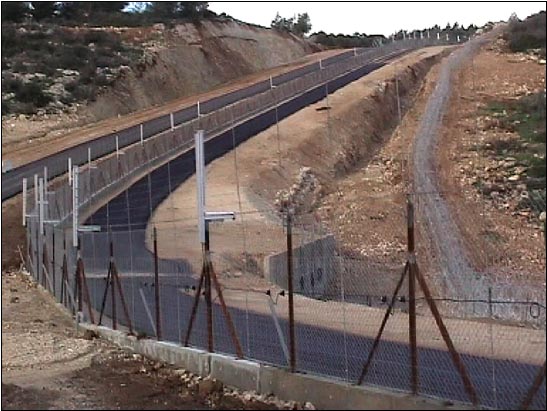Build it and don’t look back, it’ll work…
This is an excellent post. I had visited the security fence/barrier in 2004, and was I believe, instructed by the very man, Tirza. US citizens are not yet routinely attacked while driving on the motorways adjacent from the border by sniper fire, so fencing ´with Israeli designs’ will suffice. I can imagine drones being dispatched at a moments notice to ”sector J” after being violated by whomever, and then patrols sent to investigate further. Israel’s security fence is one of their great success stories, in practice and in the info-war that followed. Not a peep about it anymore
Build a Wall! Except when you should build a fence.
by brianoflondon 48 • 33 minutes ago
I had a chat with Scott Adams the other day. He called me on “Interface” the app from his startup where you can find experts on various subjects and pay in either crypto (WHEN tokens on the Ethererum network) or dollars (if you want to talk to me, download Interface and search for Brian of London).
One of the topics we spoke of was the subject of Trump’s famous Wall on the southern border and the experience of Israel building a security barrier in the disputed territories.
I told Scott about the briefing I had a few weeks ago on a trip sponsored by the Israeli Government Press Office for journalists. A group of us were given a tour and an explanation by Col Danny Tirza very similar to the one reported here:
In the early 2000s, Palestinian terrorists murdered more than 1,000 innocent Israelis. There’s only so much the Israeli military could do with their guns without threatening innocent lives. They had rules of engagement – stop and surround the terrorist, shoot at their feet to stop them and remove the explosives they were carrying. Yet, they couldn’t stop every terrorist and were at a loss as to how to stop the slaughter.
Col. Tirza had an idea – and the result is a 451 mile-long, 45 meter-wide barrier separating Israel and the West Bank.
That’s a little simplistic. Political forces in Israel resisted building a barrier for many years, until the number and scale of attacks meant large numbers of Israelis were being murdered almost daily, the political will meant something had to be done. One of the top recommendations was to build a barrier.
What should be interesting for the contemporary US political discussion over the dichotomy between “securing the border” and Trump’s “Build the wall” is how Israel solved this by handing the on the ground decisions to a practical IDF officer who knew the land and local issues intimately. He relied on local knowledge and engineering advice, not political debate. This is his biography from a 2006 article based on a briefing he gave:
Col. (Res.) Danny Tirza is in charge of planning the security fence between the West Bank and Israel, Israel’s largest infrastructure project. Since 1994, Col. Tirza has headed a special staff in the IDF Central Command in charge of regional strategic planning. He has taken part in formulating Israel’s security positions in negotiations with the Palestinians and has participated in various stages of the negotiations. Col. Tirza specializes in the geography of Judea and Samaria, the Jordan Valley, and Jerusalem. This Jerusalem Issue Brief is based on his presentation at the Institute for Contemporary Affairs in Jerusalem on January 26, 2006.
Writing in 2006, Col Danny Tirza gave much more detail on the process of how it was designed and built, I explored visually the difference between the concrete wall and the fence in a video I’ll embed bellow.
In urban areas where there is not enough space, we are building a concrete wall, but the wall is only 5 percent of the total project, which will be about 726 kilometers long. We also understand that we have to take the needs of people into consideration, and we sometimes have to build new roads for the villagers. At the end of the project there will be fewer than 7,000 people with Palestinian IDs on the Israeli side of the fence, but there will be a lot of Israelis living east of the fence.
The army is seizing the land for the fence only temporarily. The owners will receive compensation annually for the use of the land, and we try to build on public land wherever possible. We have also replanted more than 90,000 trees in the area to try to minimize the damage to local farmers. Israel is not fighting against the Palestinian people; we are fighting the terror organizations.
You can see some of Danny’s briefing (pretty much identical to the one I heard a few weeks ago) in this video where he draws out this key point of using a wall in urban areas on for reasons of space. In most places a fence is better and less disruptive while being equally as good at stopping movement.
This is my explanation, with some pictures of the difference between a fence and a wall.
//d.tube/#!/v/brianoflondon/sfghu66x
And if you want to talk to me, download Interface and search for Brian of London!

